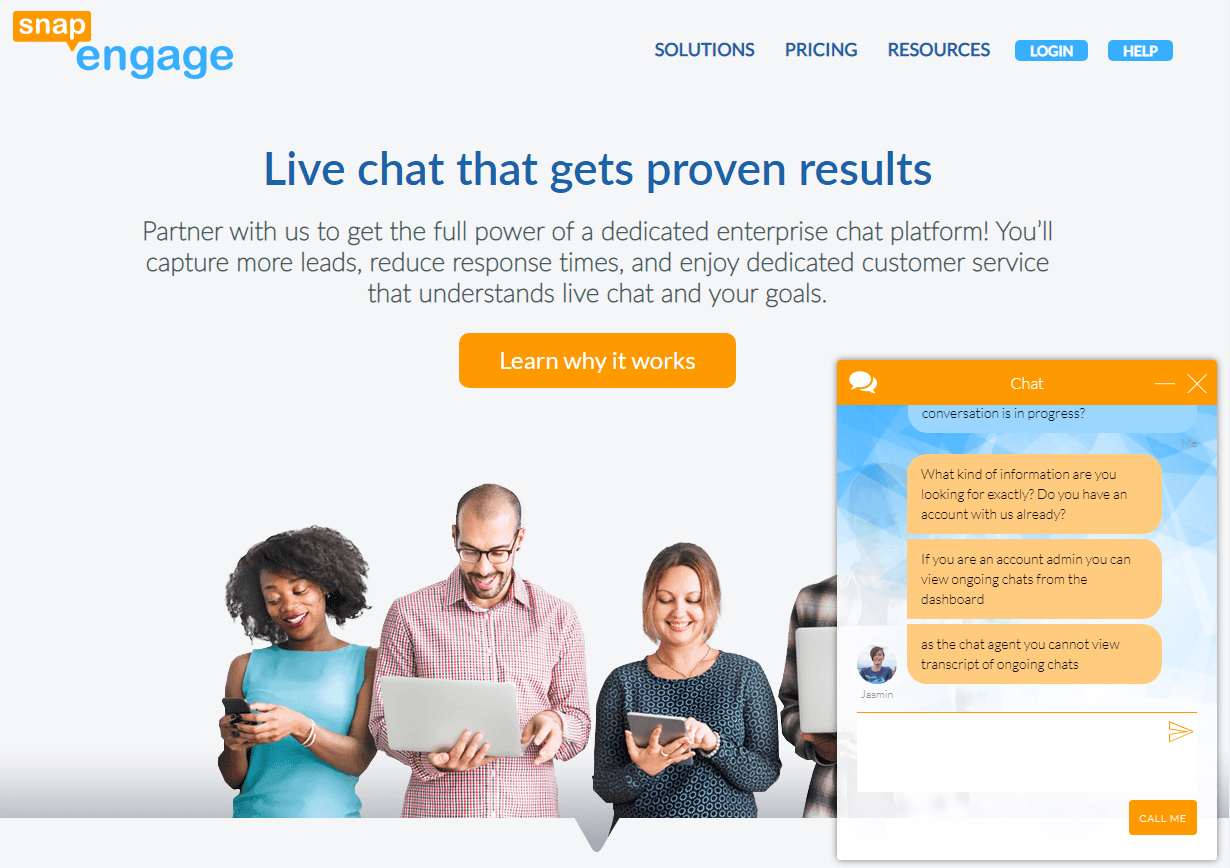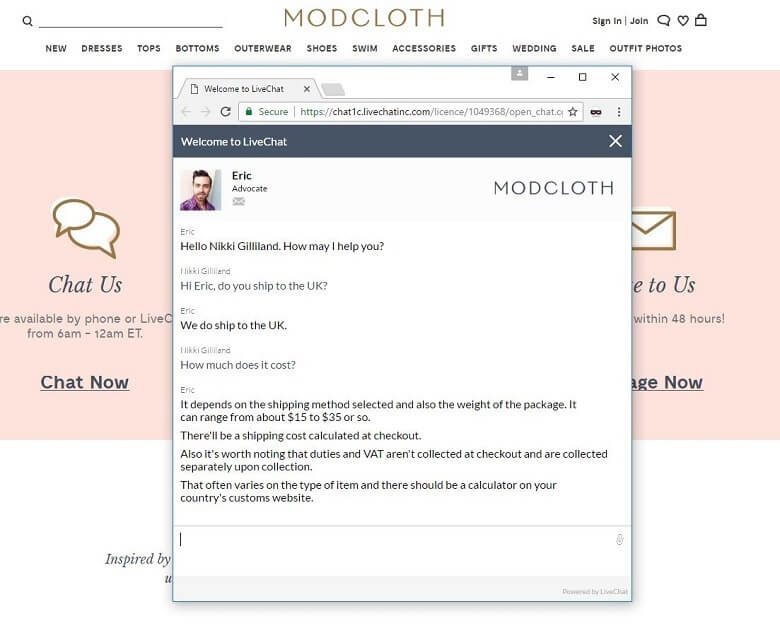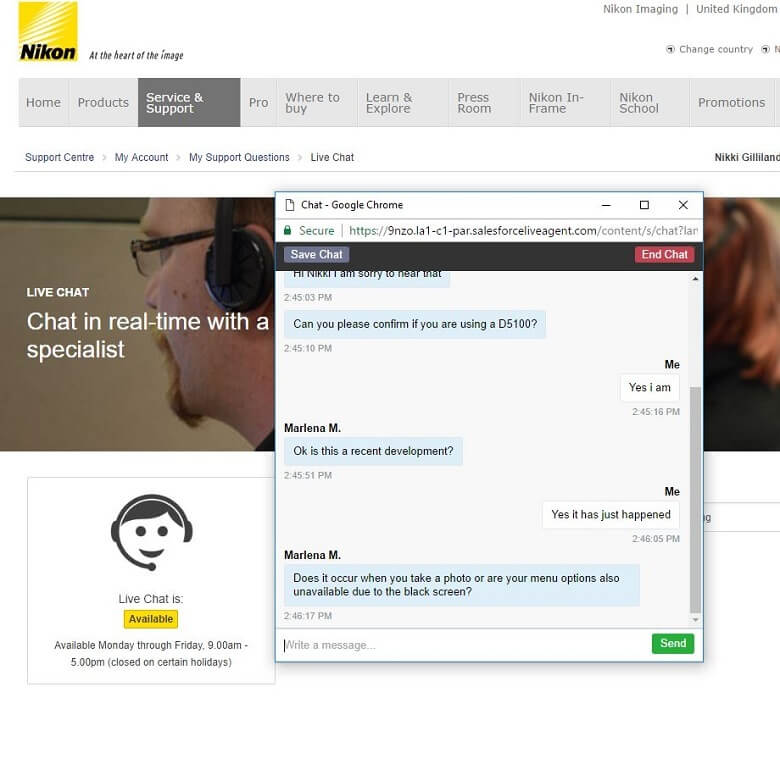The competition in e-commerce is really getting out of hands. Every day, hundreds and thousands of new eCommerce websites are entering the industry so drawing the attention of prospective customers to your website is a real struggle.
Due to the abundance of available channels; a visitor entering and then quickly moving to other websites is a very common problem in this industry. In most of the cases, e-commerce portals & their prospects are incoherent which creates a communication gap as there is no one to handle queries and drive the sale home.
This means that e-commerce retailers must go an extra mile and focus on customer centricity as it really goes a long way in terms of closing a deal. As a retailer; we all know that customers get flattered with additional assistance, and it is a great room of exploitation.

Responding to a customer’s query in real time makes him/her feel that their input is being valued with care and proper attention. Which is why; live chat might be your silver bullet and a game changer in improving sales and conversions.
The reasons to include live chat as a part of your customer service strategy are many. Compared to conventional support channels like emails and phone calls, live chat is cheap, fast and convenient. Above all, customers don’t just expect it but they absolutely love it.
The SalesForce study finds that almost 64% of customers expect companies to respond and interact with them in real-time, while 80% of business buyers expect the same.
There is no debate in saying that live chat can obviously improve customer satisfaction as well as customer retention provided if it is executed correctly. We have assembled a set of guidelines on how a service agent can handle the major key points in a professional way to brilliantly to gain more conversions and ensure an optimum customer support.
1. Make the First Move.
An explicit sign of live chat’s progression is the popularizing trend of representative speaking first. This e-commerce trend is becoming immensely popular and now every other e-commerce site has a live chat that speaks first.
Rep speaking first is now clearly dominating the mainstream so take your live chat to the next level by automatically starting the conversation. Start by asking a simple and broad question like, “Hi, what brings you to our site today?” This is two way advantageous; firstly, it notifies the visitors that live chat exists and secondly; it makes live chat easy to find and locate.
Moreover, some people are shy and unsocial in nature. They are hesitant in taking the initiative. Rep first approach can increase engagement as the visitors get quickly caught on.
Let’s take an example of a popular B2B and see if they think of it the same way. Soon as you land on the home page of SnapEngage, you’ll automatically receive the following message.

2. Informal and Upbeat Communication.
When we first introduced live chat to one of our websites, to be honest, we had no idea which communication format to choose. As an experiment, we initially tried both formal and informal and as a result of what we experienced; the company unanimously agreed on choosing the latter one.
And the reasons are pretty obvious; informal tones make you sound more “personable” like there is an actual person behind the chat window. We, humans, are emotional beings and want to be treated that way. A very dressy and formal tone makes a customer think as if he/she/ze is interacting with bots. Informal tone humanizes your brand and helps you sound more friendly and understanding.
Use friendly tone in your dialogues and don’t hesitate in using emojis and gifs as they help to create a real-life conversation environment and depict emotions that you can’t transmit through the screen. A charismatic live chat rep can turn a question into a sale just as easily as an in-person sales rep can.
Another popular practice is to use real names and pictures. Seeing a person’s actual face and a real name attached to it is the quickest route to developing bonds with your customers, and make the conversation feel more like a true conversation.
ModCloth is one of the most popular retailers known for its tone of voice and outstanding customer care. Their agents use real name and pictures and are known as “ModCloth advocates”.

3. Educate Chat Agents about Products.
One of the premier reasons why live chat is so appealing to customers is the real-time responsiveness and quick support. If you fail to provide customers with quick help then your live chat is a total failure.
To fulfill the basic purpose of the live chat, the agent must have a sound knowledge about the products or services. Customers are often confused on how to select a product or which solution will be the best match for their requirement. They will just drop a message and demand a quick solution.
To engage customers in a productive conversation, you must train your agents and equip them with sound knowledge of the product. Training agents is among the best practices for engaging prospective customers and nudging them into the sales funnel.
Nikon uses its live chat to troubleshoot common issues and their highly trained agents offer real-time help and advice on how to fix specific problems with its cameras.

4. How to Say,” I Don’t Know”?
Let’s be fair guys; no matter how well trained and well equipped you are, chances are that you might land on a query that gets you off guard and you don’t have much knowledge on the subject of matter.
Obviously; you can’t just blatantly say that “I don’t know” but there are several other ways to play it out nice. Here are some scripted lines that sound too clinched but they work most of the time;
- “That is a good question; just give a couple of minutes I will find out for you.”
- “I’m extremely sorry; I don’t have the information on that give me a couple of minutes I will clarify this with our manager.”
- “I’m sorry, this question is out of my expertise, but Maha from the tech support department will be able to help you. Do you mind if I connect you with her?”
5. End on a High Note.
Like most things in life; the way things end can leave an everlasting impression. You need to make sure that your live chat ends in positively as it can overshadow the rest of the experience.
It is a good practice to ask for any further assistance required and wait for the customer to initiate the end of the conversation. You trying to conclude the chat will leave a bad taste in the mouth of customer and they will feel as if you are trying to dismiss them.
End the customer with a definite goodbye and invite them to chat again. Here is an example.
“Thank you for chatting with us today. If any other questions arise, please feel free to contact us at any time. Thanks so much for calling. Have a nice day. Goodbye.”
You can also ask your customers to rate their chat experience as this will help you analyze if your customers are satisfied and agents are proactively responding.
Conclusion.
A quick final tip is to make your live chat mobile responsive as a lot of customers have moved to mobile phones are smart devices. To ensure a smooth customer experience ask your development team to design the live chat feature that is feasible and responsive on every viewport.
The above-mentioned live chat principles are not just parroted advice but have been tested and approved by veterans in the field. If you have any suggestions, feel free to share with us in the comment sections below.
Author Bio:
Asad is a digital marketing expert with a focus on SEO & Paid media. Currently, he is heading the marketing department of GO-Gulf – a Dubai web development firm. With over 8 years of experience in eCommerce SEO, online traffic generation, targeting relevant audience and conversion optimization, Asad has helped award-winning businesses increase their revenues. You can reach him on LinkedIn.


